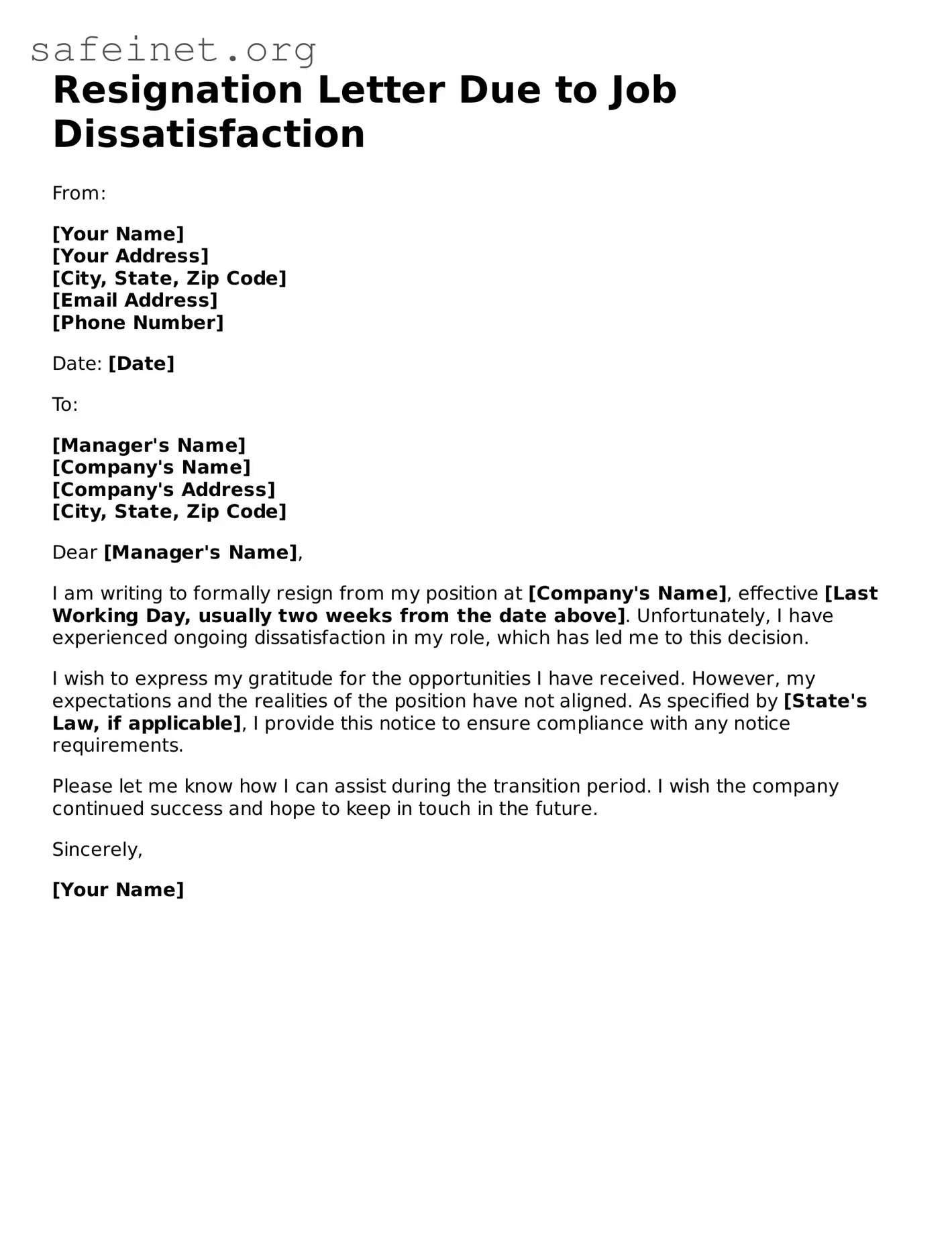Official Resignation Letter Due to Job Dissatisfaction Document
The Resignation Letter Due to Job Dissatisfaction is a formal document used by employees to notify their employer of leaving their position due to unhappiness or dissatisfaction in their role. This letter serves not only as a notification but also provides an opportunity for employees to express their reasons and maintain professionalism during their exit. If you're considering this step, take a moment to fill out the form by clicking the button below.
